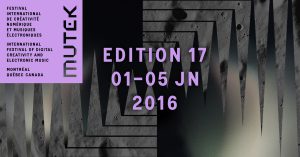The acoustic-electronic combo
In the last 5 years, I’ve been seeing more and more projects that combine the use of acoustic sounds, samples, and recordings with synthetic, analog sounds. What’s interesting is that in the 90s, this combo wasn’t very popular, and in the eyes of many purists it was a huge no-no. The benefits of an acoustic-analog recording combination is what I’d like to discuss in this post.
There are a huge number of amazing musicians we could point to as being good references of this combination. For instance, in 2011, ECM asked Ricardo Villalobos to remix some songs from their catalog.
I remember that Ric had been playing many tracks from the jazz-influenced label mostly because he loves to create these epic moments of weirdness, where he’s play something totally unexpected in the middle of his sets. Sometimes even in a peak moment where most people would be expecting a bomb song, he’d drop some weird jazz music and layer it with some of his own techno songs he recorded in his studio, mostly from his modular. Seeing him play some of that during a few events circa 2005-2009, I saw how the acoustic-electronic combo always brought some magic into a very electronic set, but you’d have to be happy. I remember some people being weirded out by it but that, as he’d say, is not his problem.
In the 90s, this combination wasn’t always welcomed, mostly because people were really wanting to dive deep into pure electronic music, as in, if it was techno, it had to be techno and there was no room for anything that wasn’t on that agenda. I’m sorry to say that I was one of those guys as well! Especially when I entered my minimal techno era around 1996, I wanted the purest electronic aesthetic and anything acoustic would make me cringe, especially guitars.
I find that ever since Ric explored the ECM catalog, it really opened a lot of doors for people to combine the two worlds to unite them. One person that jumps to my mind as one of the artists that explored that the most is certainly Petre Inspirescu, who was really known for bringing classical vibes to techno—in his mix for Fabric or in his work with the Pi Ensemble. It’s important to note that it was an exploration, yes, but it also worked really, really well. Sometimes people explore something and it doesn’t really work, but Petre, in my humble opinion, brought it to a more refined result than what Villalobos did.
So, what should we take from this history exactly? How can one get into the acoustic-electronic aesthetic and make it work well?
Reverb and Room Acoustics
It’s crazy how a good reverb can bring life to anything, and since acoustic instruments are recorded in a room, organic reverb added to a sound brings a whole new world to it. The more realistic the reverb, the more warmth it can bring [to a mix]. This is what influenced me the most to start my own reverb collection, and my lust for finding the most realistic reverb. I did many tests with mastering, asking artists who have great reverb in their productions what can make a difference.
- Convolution: If you can, always use the convolution reverb by max for live. One thing I noticed about stock plugins is the grain that comes out weird during mastering; this is never the case for convolution. If you’re not familiar with what convolution means, it’s basically taking the “image” of a place’s reverb and applying it as a preset for your plugin. You can then have special places such as a specific studio, concert room or even, a restaurant. It’s used in movies for creating proper atmospheres but it does such a great job on percussion. One of my favourite convolution reverb plugins is the one by Melda called mConvolutionMB—it’s multi-band, giving you a lot of options for creating really special spaces. You can also browse the internet in search of free impulse responses that you can load in your plugin. I also encourage you to randomly put sounds in it to get the reverb that is used in the sample to apply it to your song so you get a feeling that it’s all part of the same place.
- Record your own: I know some people who buy pieces of drum kits separately to have the real thing then can play with. They’ll then record themselves playing percussion over their song. You’d be surprised about even with a cheap microphone, you can create something pretty interesting to layer your sounds with. It will catch the reverb of your place which is also unique. Snares, hats, cymbals are cheaper to buy than you think, and having them physically with you is pretty fun too.
- Binaural recording: You can buy a binaural microphone that allows you to record sounds based upon your head, which is ideal to create stereo impression on the listener who uses headphones. If you record percussion at your ear level, it will give the listener the idea that the percussion is right in front of you. It really creates a special aesthetic for whatever you record and also some stereo placement that is unique. There are all kinds of tricks you can do with recording random things. Since it’s very precise for stereo, some people use frequency modulation using binaural technique to induce the brain in different states of mind like relaxation. I won’t get into that but there’s plenty to read on the topic if you’re curious.
- Hardware reverb: This is hard to beat. If you can invest into a hardware reverb unit such as a pedal or a rackmount effect, you’ll get some really next level results. Something like an old DP4 by Ensoniq or Alesis, Lexicon ones can be a dramatic improvement. You can also look into a multi-effect pedal like the one by Big Sky.
Preamps and Other Tools
While the idea of acoustic layered over analog is magical, you’ll have to agree that the highest quality recordings will make a huge difference. This is why when you look for quality samples, you’ll look for the highest sample rate possible and something like 192khz will be the holy grail. This means you can re-pitch it with the least compromise, and you’ll get a lot of what we call the air-factor, where the complexity of the high end will be crystal clear.
Something else people overlook, especially when it comes to samples that were recorded, is the use of preamps. I’ve been shying away from this topic for years until I really saw how using them can completely change the quality of your sound, adding not only beefiness but also, a special texture, depending of the preamp you’re using. Ones by Neve will sound different than API, for instance, and using them on certain things will change the character of a sound. Plugins that emulate them are pretty solid at it. I tested all of the preamps this year, from Universal Audio, and found that the ones by Neve are the ones that feel the suitable for the music I want to do. I also saw a considerable amount of enthusiasm from clients when I used them on their projects. So, recording your own, even with a cheap microphone, if you use some nice preamp, you’ll get something pretty solid out of it. Cheap microphone can even be a source of coloration for your samples but nowadays you can find really nice, affordable microphones so it might be worth investing a bit more so you get something useful for years ahead.
Virtual drummers are also something you can look into. There are many out there but Slate Digital makes really high quality program that can help you have highly realistic percussion. Otherwise, you can look at Addictive Drummer that has a range of different drum kits to get sounds from. It’s very realistic as well and layering it over a rigid drum machine sequence can provide a lot of depth!
SEE ALSO : Integrating a modular setup with your DAW




